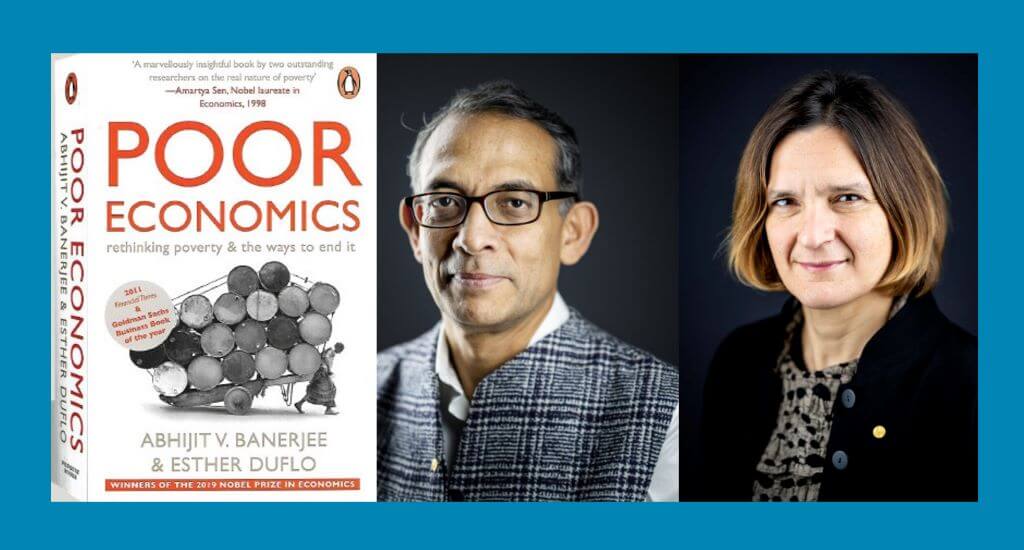The book The Age of AI And Our Human Future by former American diplomat and political scientist Henry Kissinger, American businessman and former Google CEO Eric Schmidt, and Daniel Huttenlocher, the inaugural dean of the Schwarzman College of Computing at the Massachusetts Institute of Technology (MIT) discusses the transformative impact of artificial intelligence (AI) on society, human identity, and global order.
The Age of AI And Our Human Future
It is one of the 10 best books I have read on Artificial Intelligence and the Future of Humanity. There are many things that can be pointed out. But here are a few key takeaways I found worth mentioning from the book:
1. AI’s Revolutionary Potential
AI is not just another technology but a fundamental enabler across various fields like medicine, defense, politics, and more. It has the potential to alter human identity and redefine reality. The book uses the analogy of AlphaZero, an AI that became the world’s strongest chess player after only a few hours of training, to illustrate how AI can surpass human capabilities.
It is an enabler of many industries and facets of human life: scientific research, education, manufacturing, logistics, transportation, defense, law enforcement, politics, advertising, art, culture, and more. The characteristics of AI–including its capacities to learn, evolve, and surprise — will disrupt and transform them all.
AI has the potential to revolutionize healthcare by providing faster, more accurate diagnoses and discovering new treatments. By automating repetitive tasks and analysing data at speeds humans cannot match, it can increase productivity across industries, while tailoring learning experiences to individual students’ needs, it can personalize education where through its adaptive learning systems, students can receive customized support that enhances their learning capabilities.
The authors observe that AI has the capability to improve urban planning, optimize traffic flow, and enhance public safety through intelligent surveillance systems responsible for reduced environmental effects. It is able to identify patterns and create links in fields like quantum physics and biology, that human researchers effectively able to.
While AI may displace some jobs, it will also create new scopes of jobs in fields such as AI development, data science, and machine ethics while at the same time, it can be used to climate change effects by optimizing energy use, predicting weather patterns, and helping in wildlife conservation; and it expands the horizon of real-time translation and language models by dethroning the concurrent communication barriers between cultures and nations.
In addition to improved personalization of services in shopping with improved satisfaction and engagement, AI-powered autonomous vehicles can reduce traffic casualties, save life and make road safer and transportation systems even more efficient, AI is expected to augment human capabilities by acting as a collaborator in creative fields such as art, music, and literature.
2. Human Identity and AI
One of the central themes is the potential for AI to alter what it means to be human.
AI can achieve tasks that are beyond human cognitive abilities and may change how humans perceive, understand, and interact with the world. AI’s ability to uncover new realities, like discovering novel antibiotics or new strategies in chess, shows its capacity to see patterns and possibilities that humans might miss.
3. Human-Machine Partnership
The book predicts a future where humans and machines collaborate more closely. AI will become a partner in decision-making processes rather than just a tool, helping humans solve complex problems in ways we might not anticipate.
The authors stress that this partnership will necessarily change the way our society functions.
To cite Kissinger and his colleagues we see the human cost of AI, “Now we are entering an era in which AI — a human creation — is increasingly entrusted with tasks that previously would have been performed, or attempted, by human minds. As AI executes these tasks, producing results approximating and sometimes surpassing those of human intelligence, it challenges a defining attribute of what it means to be human.
Moreover, AI is capable of learning, evolving, and becoming “better”. This dynamic learning permits AI to achieve complex outcomes that were, until now, the preserve of humans and human organizations.”
Regarding the alteration of human reason they put, “In an era in which reality can be predicted, approximated, and simulated by an AI that can assess what is relevant to our lives, predict what will come next, and decide what to do, the role of human reason will change.”
In the chapter AI and Human Identity, the writers inquire “With the rise of AI, the definitions of the human role, human aspiration, and human fulfilment will change. What human qualities will this age celebrate? What will its guiding principles be?
Moreover, humanity will count the cost of being habituated to AI. “But as we grow habituated to and reliant on AI, restricting it may become more costly and psychologically challenging or even more technically complicated”, the authors emphasise.
4. Impact on Global Order and Security
The authors discuss the implications of AI on world security, especially in military contexts. AI’s capacity to identify patterns and predict outcomes could lead to changes in power dynamics and warfare, including autonomous weapons and AI-driven defense strategies.
Nations that adapt to AI advancements will hold significant strategic advantages.
AI poses risks concerning privacy, security, and the potential misuse of AI technologies in warfare or surveillance. The authors argue for global cooperation to establish guidelines and regulations that can manage AI’s development responsibly.
Cyber Warfare
AI’s role in cyber warfare is growing rapidly posing new threats to national security. Cyber-attacks are becoming more sophisticated, targeting not just military assets but also civilian infrastructure, financial systems, and political institutions.
AI enhances both the offensive and defensive capabilities in cyberspace, allowing nations to conduct highly targeted cyber operations that can cripple an adversary without the need for conventional military engagement. This has led to a paradigm shift in how nations perceive threats and respond to them.
The authors explain the threats of cyberwarfare, “No major country can afford to ignore AI’s security dimensions. A race for strategic AI advantage is already taking place, particularly between the United States and China and to some extent Russia. As the knowledge — or suspicion — that others are obtaining certain AI capabilities spreads, more nations will seek them. Once introduced, these capabilities could spread quickly. Although creating a sophisticated AI requires substantial computing power, proliferating or operating the AI generally does not.”
Nuclear Deterrence
The traditional model of nuclear deterrence, which relies on the threat of mutually assured destruction (MAD), is being challenged by AI. AI-driven systems can potentially make real-time decisions in conflict situations, reducing human interference which poses the risk of accidental escalation, where AI systems make a mistake in decoding signals and provoke a nuclear response.
Additionally, AI’s ability to outsmart defense systems could undermine the existing deterrence frameworks, as adversaries might believe they can strike without retaliation.
Arms Control
The integration of AI into military strategies complicates arms control efforts. Historically, arms control treaties have focused on limiting specific weapons or capabilities, but AI is not a single weapon—it’s a technology that can be applied in various ways. This makes it difficult to regulate.
AI can enhance autonomous weapons, making them faster and more precise, but also more difficult to control. To the authors, “cyber conflict, which has magnified vulnerabilities as well as expanded the field of strategic contests and the variety of options available to participants. And AI has the capacity to transform conventional, nuclear, and cyber weapons strategy. The emergence of new technology has compounded the dilemmas of nuclear weapons.”
Traditional arms control frameworks are struggling to keep pace with the rapid advancements in AI, raising concerns about an unregulated arms race.
Conflict in the Digital Age
Conflict in the digital age is increasingly taking place in cyberspace, where nations can engage in acts of aggression without crossing traditional military boundaries.
AI-driven propaganda campaigns, cyber-attacks on critical infrastructure, and digital spying are now common strategies. These conflicts often remain below the edge of traditional warfare, making it harder to attribute responsibility and respond properly.
Nations are also using AI to manipulate information and influence public opinion, which can destabilize governments and create internal conflict.
“A central paradox of our digital age is that the greater a society’s digital capacity, the more vulnerable it becomes. The comparatively low cost of cyber capabilities and operations, and the relative deniability that some cyber operations may provide, has encouraged some states to use semiautonomous actors to perform cyber functions who might be difficult to control and may engage in provocative activities without official sanction.”
Upheaval in Security
By introducing new capabilities and vulnerabilities, AI is causing an upheaval in global security.
Autonomous systems, driven by AI, are transforming how military operations are conducted, from drone warfare to AI-powered surveillance. These technologies are reshaping the nature of conflict, as machines take on roles traditionally held by human soldiers and decision-makers.
The speed and complexity of AI-driven warfare challenge human decision-making processes, making it essential to rethink strategies, doctrines, and policies to adapt to this new reality.
They say that technology had been in duel use throughout history, while some spread easily and widely others have tremendous destructive power. Nondisruptive technology like the railroad that transported goods also delivered soldiers to battle. A hunting rifle may be in widespread use and possess both military and civilian applications, but its limited capacity prevents its wielder from inflicting destruction on a strategic level.
But AI breaks this paradigm as It spreads easily and can be run on single computers or small
networks, meaning that governments have difficulty controlling the technology by controlling the infrastructure.
AI-enabled weapons may allow adversaries to launch digital assaults with exceptional speed, dramatically accelerating the human capacity to exploit digital vulnerabilities. As such, a state may effectively have no time to evaluate the signs of an incoming attack.
Instead, it may need to respond immediately or risk disablement. For the opposing side, the reported existence of such a system and the knowledge that it could act without warning may serve as a spur to additional construction and planning, which may include developing parallel technology or one based on different algorithms.
Unless care is taken to develop a common concept of limits, the compulsion to act first may overwhelm the need to act wisely — as was the case in the early twentieth century — if indeed humans participate in such decisions at all.
Historically, countries planning for battle have been able to understand, if imperfectly, their adversaries’ doctrines, tactics, and strategic psychology. But the involvement of AI is such situation may bring unexpected results because “where a military uses AI to plan or target, these familiar concepts and interactions may become newly strange because they will involve communication with, and interpretation of, an intelligence that is unfamiliar in its methods and tactics.”
In their words: “The shift to AI and AI-assisted weapons and defense systems involves a measure of reliance on the intelligence of considerable analytic potential operating on a fundamentally different experiential paradigm. Such reliance will introduce unknown or poorly understood risks.”
AI increases the inherent risk of pre-emption and premature use escalating
into conflict. A country fearing that its adversary is developing automatic
capabilities may seek to preempt it: if the attack “succeeds,” there may be no
way to know whether it was justified.
5. Ethical and Philosophical Questions
The book explores the ethical dilemmas AI presents. If AI can make decisions that humans cannot fully understand, how should society address these questions?
AI challenges longstanding philosophical concepts about free will, knowledge, and reality.
As AI is woven into the fabric of daily existence, expands that existence, and transforms it, humanity will have conflicting impulses.
AI challenges long-standing philosophical concepts of knowledge, perception, and human identity. The authors suggest that AI may uncover aspects of reality that humans have not been able to perceive, raising questions about whether AI-generated knowledge is fundamentally different from human-generated knowledge and how this will affect society’s view of itself.
The AI revolution will occur quicker than most humans expect. Humans will remain unprepared to navigate it or its implications unless we develop new concepts to explain, interpret, and organize its consequent transformations, we will be. The authors say, “Morally, philosophically, psychologically, practically — in every way — we find ourselves on the height of a new epoch.”
Poignant is “At every turn, humanity will have three primary options: confining AI, partnering with it, or deferring to it. These choices will define AI’s application to specific tasks or domains, reflecting philosophical as well as practical dimensions.”
They ingeniously put the philosophical dilemma centring the creation and control of AI, “Created by humans, AI should be overseen by humans. But in our time, one of AI’s challenges is that the skills and resources required to create it are not inevitably paired with the philosophical perspective to understand its broader implications. The AI age needs its own Descartes, its own Kant, to explain what is being created and what it will mean for humanity.”
6. AI and Reality
AI’s ability to access new dimensions of reality—beyond human perception—is a profound aspect discussed. The authors suggest that AI might uncover aspects of reality that humans are not equipped to perceive, reshaping our understanding of the world.
The AI and its reality is seen by the authors when they write, “… as AI becomes increasingly prevalent, disconnection will become an increasingly lonely journey. Indeed, even the possibility of disconnection may prove illusory: as society becomes ever more digitized, and AI ever more integrated into governments and products, its reach may prove all but inescapable.”
In the future, children may grow up with AI assistants, more advanced than Alexas and Google Homes, that will be many things at once: babysitter, tutor, adviser, friend. Such an assistant will be able to teach children virtually any language or train children in any subject, calibrating its style to individual students’ performance and learning styles to bring out their best.
Just as parents a generation ago limited television time and parents today limit screen time, parents in the future may limit AI time.
7. The Role of Governments and Corporations
The book also addresses the role of governments and corporations in shaping the development and application of AI. How these entities handle AI’s integration into society will determine the future social and political order.
AI is capable of exploiting human passions more effectively than traditional propaganda. Having tailored itself to individual preferences and instincts, AI elicits responses its creator or user desires.
8. No Single Answer to AI
The authors emphasize that AI’s development does not lend itself to a single path or solution. It poses complex, multifaceted challenges that require cooperation across disciplines and countries. They advocate for societies to begin asking important questions about AI now, while it is still in its early stages of development.
“All should take part in an exchange of views not shaped by preconceptions. At every turn, humanity will have three primary options: confining AI, partnering with it, or deferring to it”, they write.
Ai will be responsible for creating and disseminating misinformation which it is able to create as per its user’s preferences. With the use of AIs to navigate masses of information comes the challenge of distortion meaning the AIs promoting the world humans inherently prefer. In this domain, AIs can readily magnify and echo our cognitive biases.
9. Effects of Global Network Platform
Chapter 4 of The Age of AI And Our Human Future, titled Global Network Platforms explores how artificial intelligence (AI) is intertwined with network platforms and how these platforms are shaping human society and the geopolitical landscape globally.
AI is now embedded in the digital platforms we use for everyday activities like social media, searches, streaming, and navigation. It operates in the background, facilitating and shaping these activities without direct human interaction.
These network platforms, such as Google and Facebook, benefit from “positive network effects,” meaning that the more users they attract, the more valuable the platforms become. This leads to the dominance of a few global platforms, creating large-scale intersections between humans and AI.
And as AI is further incorporated into such network platforms, it influences more aspects of life, leading to significant shifts in how individuals interact with the world. The scale of this interaction is described as having civilizational significance, reshaping human connections, commerce, and even thought processes.
The authors talk about the platforms’ impacts on society as a whole, “that Governments, platform operators, and users must consider the impact of these platforms on society, privacy, and even political stability. “As AI assumes greater roles on more varied network platforms, these platforms’ basic manifestations are becoming material for headlines and geopolitical manoeuvres, shaping aspects of individuals’ daily reality.
Without additional means of explanation, discussion, and oversight that are compatible with a society’s values and conducive to some degree of social and political consensus, a rebellion may unfold against the advent of new and seemingly impersonal and inexorable forces — as with the rise of Romanticism in the nineteenth century and the explosion of radical ideologies in the twentieth.”
The chapter emphasizes the geopolitical significance (or consequence) of AI-driven platforms, as countries may use these platforms for strategic advantage. The global reach of platforms such as WeChat (China) and Google (US) has sparked concerns about the potential for them to be used as tools of influence, especially in shaping national policies and public discourse.
As network platforms continue to evolve with AI, the boundaries between digital services, commerce, and governance will distort further while addressing these developments will require careful thought, global cooperation, and ethical guidelines to ensure that AI serves humanity in a beneficial way.
10. AI and the Future
Chapter 7 of The Age of AI And Our Human Future is titled AI and the Future. The chapter offers a comprehensive exploration of how AI could transform society, drawing parallels between the AI revolution and past technological revolutions, such as the invention of the printing press.
They put that Just as the printing press revolutionized knowledge propagation and the spread of ideas, AI promises to redefine the production, accessibility, and application of knowledge in ways we cannot yet fully foresee.
AI could fundamentally change the way humans interact with information and knowledge. AI’s ability to process massive amounts of data allows it to discover patterns and generate insights far beyond human capabilities. This shift challenges the traditional human role as the primary knower and organizer of reality.
That AI will impact various domains of human activity—scientific discovery, economics, politics, security, and even art. AI’s role in shaping these areas could lead to entirely new ways of thinking about problem-solving and decision-making, as AI moves from being a tool to being an active partner in these processes.
AI’s increasing presence in everyday life could lead to profound social transformations, as individuals and institutions must adapt to a world where AI makes significant decisions. The authors emphasize the need for societies to intentionally engage in discussions about AI’s role, its ethical implications, and how it should be regulated to ensure its development aligns with human values.
Therefore, “We must prevent”, suggest the authors “AIs operating faster than human decision makers from undertaking irretrievable actions with strategic consequences.”
11. Automation and employment
The authors also address the condition of the future of employment in the context of AI’s growing role in automating tasks and reshaping the concepts of jobs and industries.
As such, AI could potentially jeopardize people’s sense of identity and financial security, particularly for workers in blue-collar, middle-management, and professional roles that involve data review or standard document drafting.
While AI may lead to increased efficiency and create new job opportunities, the dislocation it causes may bring short-term hardship, leaving many people without the solace that the disruptions are temporary.
The authors draw historical parallels with past technological revolutions, such as the Industrial Revolution, that displaced workers but eventually led to overall societal betterment. However, they stress that the scale and speed of AI’s impact are unprecedented.
As some may find themselves freed from labour to focus on the more fulfilling elements of their work, others may find their skills no longer up to the mark or even necessary. While these challenges are frightening, they are not unprecedented.
Due to previous technological revolutions, the form of work changed and workers were displaced, as a result, the industrialization of agriculture triggered mass migration to the cities, Globalization altered manufacturing and supply chains, and both prompted changes, even unrest, before many societies ultimately absorbed the changes for their overall betterment, according to the authors.
“Whatever AI’s long-term effects prove to be, in the short term, the technology will revolutionize certain economic segments, professions, and identities. Hence, societies need to be ready to supply the workers not only with alternative sources of income but also with different sources of fulfilment.”
However, “For those in managerial positions, AI offers advantages in decision-making, resource distribution, and bias reduction, but it also raises concerns about whether human autonomy and agency will be diminished in favour of AI-driven processes”.
Conclusion
In summary, The Age of AI And Our Human Future explores how AI will fundamentally reshape human life, society, and global politics. It highlights the profound challenges AI presents, urging readers to think critically about how we should integrate AI into our lives and systems while maintaining human values.
While the positive impacts of AI are promising, the book doesn’t shy away from the dangers. AI has the potential to disrupt society in ways that are both unexpected and alarming.
I conclude my review keeping the potential danger that AI may or will cause to humanity in the near future that include job displacement and social inequality, privacy erosion, autonomous weapons and warfare, manipulation and disinformation, loss of human agency, and ethical dilemmas.






